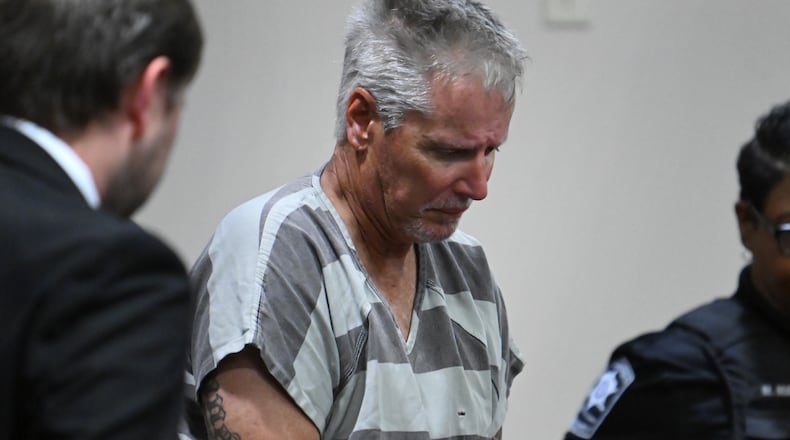This month, Georgia officials charged Colin Gray, the father of the suspected Apalachee High School shooter, with two counts of second-degree murder, four counts of involuntary manslaughter and eight counts of cruelty to children. These charges arrived five months after a Michigan judge sentenced the parents of a school shooter to at least 10 years in prison related to their son’s 2021 rampage that killed four students.
Holding parents culpable is a prosecution trend likely to become more widely adopted. This could deter some school shootings or other gun violence — if it leads more parents to rethink giving their children unsupervised access to firearms.
Credit: Handout
Credit: Handout
Should children ever have unsupervised access to firearms? At what age is unsupervised access appropriate? Individual opinions and state laws differ on these questions. Among the evidence, however, is that certain states have enacted effective policies for reducing firearm violence among young people.
Child-access-prevention laws make it a crime for parents or others to store firearm where a child can access them. As part of RAND’s ongoing Gun Policy in America work, my colleagues and I reviewed all available research studies on the effects of such safe storage laws. We found “supportive evidence” — our highest evidence rating — that these laws reduce firearm suicides and homicides among young people. This suggests that implementing and enforcing child-access laws can be a critical step in preventing firearm access that could lead to tragic outcomes.
Safe-storage laws also are a popular idea. In surveys, large majorities of firearm owners, nonowners, Democrats and Republicans all agree that gun owners should be required to store their weapons where children cannot access them. But many states — almost half — have no such laws.
Neither Georgia nor Michigan had such laws in place at the time of the shootings that led to prosecution of parents. Wisely, Michigan has since implemented a child-access-prevention law.
Resistance to such laws often comes from gun owners who fear that locking up their guns might make them inaccessible during an emergency — the situation that led many people to buy guns in the first place. This argument is weakened, first, by the wide selection of quick-access gun safes that use biometrics or other technologies to open in seconds, and, second, by the immediate danger to children or others who could gain unsupervised access to unsecured weapons.
Nine states have “minimum age of purchase or possession” laws that require supervised firearm access until age 21. Georgia and Michigan have no such law. They allow 18-year-olds to purchase and possess handguns and semiautomatic rifles without parental supervision. Those under 18 are allowed unsupervised possession of such firearms when at home. Here, too, our analysis of all the research found supportive evidence that raising the purchasing age requirement reduces firearm suicides among young people.
Whether minimum-age laws also reduce homicides and school shootings is harder to determine. So far, there have been only a few studies that have tried to examine these questions, and no clear findings have emerged. It seems likely, however, that if restricting firearm access to teenagers reduces their firearm suicides, it would reduce their other impulsive firearm violence as well.
State age-of-purchase laws and those that explicitly prohibit unsupervised child access to firearms are effective tools for preventing firearm violence by and against children. They send a strong message to parents — as well as other gun owners — about their responsibility to keep firearms secured and out of the hands of unsupervised children and teens. Georgia and other states that have not yet adopted such policies should consider them in the wake of this latest, but unfortunately predictable, tragedy.
Prosecuting parents for recklessly allowing their children to access firearms is a sensible strategy one that might well cause some parents to rethink their Christmas gift plans. It also could help reinforce norms that many in the gun-owning community hold about responsible firearm use and management. However, prosecuting parents is a strategy that is likely to be used only after preventable tragedies have occurred. Enacting and enforcing strong child-access-prevention laws can preempt these tragedies by addressing the root issue: access to firearms.
Though it remains uncertain whether such measures will immediately result in fewer school shootings, the evidence shows that limiting a youth’s access to firearms reduces the risk of impulsive, deadly actions. Preventing youth access to firearms is not just a hopeful strategy — it is a proven, data-driven approach that can save lives. It should be a priority for policymakers nationwide.
Andrew R. Morral is the Greenwald Family Chair in Gun Policy at RAND and co-leader of its Gun Policy in America initiative, as well as director of the National Collaborative on Gun Violence Research, a private philanthropy that funds gun-violence-prevention research.
About the Author
Keep Reading
The Latest
Featured


